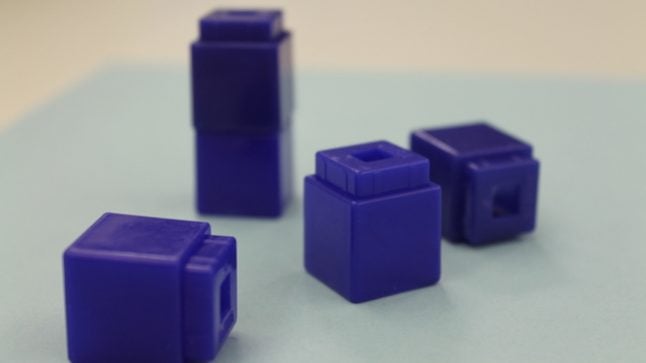Series: Focus on the Child
Many Ways to See How Many

How many times have you heard young children (or their parents) proudly exclaim how high they can count? Children love to master the sequence of counting words—reciting the number names in the same order every time—just as they love to sing their ABCs.
Regardless of how high a preschooler can rote count, a child’s sense of what those numbers actually mean develops gradually. We call this understanding number sense, and it requires relating numbers to real quantities. Most three-year olds have a solid number sense for the quantities of 1, 2, and 3. That is, they can think about small numbers and their relationships such as 2 cookies is 1 for me and 1 for you or 3 toy cars and 2 tracks to race means 1 car will have to wait.
By the time children leave preschool, most have developed number sense through 5, and many up through 10 and beyond. Two videos featuring the same preschooler vividly demonstrate how children can visualize small quantities in a variety of ways and use those numbers to estimate larger quantities.
What a wonderful demonstration of how important it is that young children get quantities into their eyes, ears, and fingers – that’s how they get them fixed in their brains!
In the first video, this lively preschooler gets a quick look at a dot card, and then uses a small set of counters to produce a set of the same quantity.
For the most part, she has no trouble with this task. She instantly perceives the quantities without counting, an ability called subitizing. She only uses counting to confirm she put out the right amount. However, an unfamiliar configuration of 5 dots in a circle slows her down. She tries a few time before she decides how many counters feels like enough. As she works, she makes a little hum for each of the dots as she places them. What a wonderful demonstration of how important it is that young children get quantities into their eyes, ears, and fingers – that’s how they get them fixed in their brains!
This second task is more intriguing.
This time, the interviewer points to small collection of 7 cubes on one mat and then dumps a larger number of the same cubes on a second mat. The girl quickly says what she knows is a large number—1000! But when the interviewer suggests that it might be 100, the girl cheerfully agrees—she just knows it’s a lot. But, when asked if there are a lot of 7s, she just as quickly rejects that idea. She looks over at the mat with 7 and then back at the larger quantity, hums a bit again, and then puts up 3 fingers to show how many 7s there are.
Both the use of gesture and her estimation of 3 groups of 7 are significant. Her estimate is reasonably close to the precise number of cubes (27). Her 3 fingers show she is still working on getting numbers into words. In fact, when asked how many it would be if there were 7 and 7 and 7, she names the next word in the count sequence—8. The point is that her sense of how many is clearly linked to what she sees, that is to the real quantity. Because she has a sense of 7, she can intuitively use the strategy of visually clustering items into groups of 7 to estimate a reasonable number of 7s within the whole set. With time and opportunity, she will learn to connect those large number words that she can say with the real quantities that she can see.